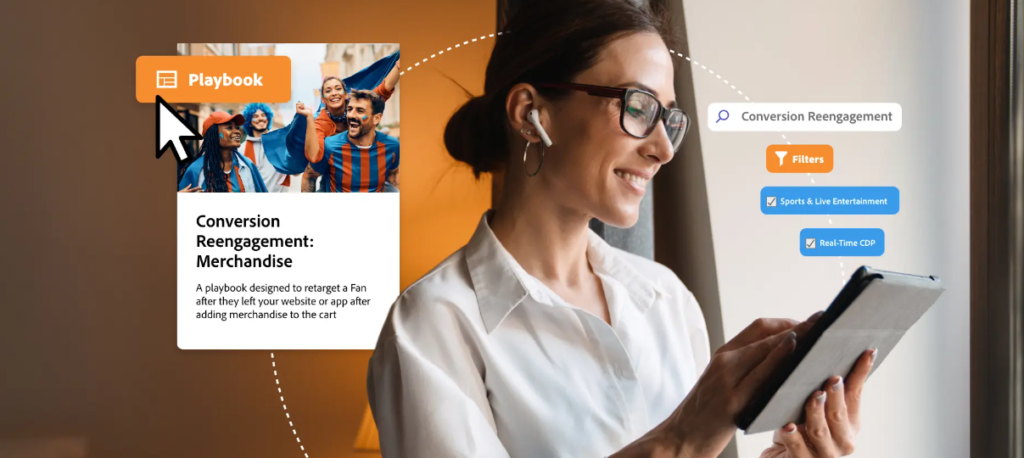What is Clienteling?
February 16, 2024Imagine walking into your favorite store and being greeted by name. The staff knows your preferences, suggests products that perfectly match your style, and even remembers your last purchase, making recommendations based on it. This isn’t just excellent customer service; it’s clienteling at its finest – a strategy transforming the retail and e-commerce sectors by offering incredibly personalized customer experiences. In an era where 75% of customers expect personalized interactions, clienteling isn’t just a luxury; it’s a necessity.
What is Clienteling?
Clienteling refers to the strategic approach and practices used by businesses to enhance customer satisfaction and loyalty through personalized interactions and experiences. This process involves leveraging detailed customer data, including purchase history and personal preferences, to tailor the shopping experience to individual clients. The objective of clienteling is to deepen customer relationships, encouraging repeat business and increasing customer lifetime value by providing a uniquely customized and attentive service. This approach is integral to transforming the customer journey into a more personalized and engaging experience.
An effective clienteling with CDP integration:
CDP plays a critical role in effective clienteling by centralizing customer data from various sources. This unified view enables businesses to deeply understand their customers and tailor interactions across all channels. With a CDP like Scal-e‘s, retailers can engage customers more effectively, driving loyalty and sales. The technological sophistication of the solutions, such as real-time data processing and AI-driven personalization, significantly contribute to the success of the clienteling. Personalized solutions are scalable and flexible, catering to diverse retail needs. One of the CDP’s objectives is a positive impact on long-term customer loyalty and business growth, with technical complexities translated into an easy-to-understand platform that reflects the marketing team’s vision.
The 5 Types of Clienteling and Definitions
Clienteling encompasses various customer-facing roles where accessing and utilizing customer data significantly enhances the customer experience. The primary types of clienteling include:
Call Center/After-Sales Service: Here, clienteling tools are pivotal for accessing customer history and preferences. This information is crucial for providing personalized support and advice, resolving issues effectively, and fostering customer loyalty.
Cashier: In this role, clienteling involves utilizing customer data at the point of sale. This can enhance the checkout process, make personalized recommendations, and provide targeted offers based on previous purchases.
Sales Advisor: Sales advisors use clienteling tools to access detailed customer profiles. This knowledge allows them to offer tailored advice, recommend products based on past behavior, and build stronger relationships.
Marketing: Clienteling in marketing involves using customer data to create personalized marketing campaigns. This can include targeted emails, personalized online experiences, and customized offers.
Consumer: On the consumer side, clienteling manifests in the personalized experiences they receive. This can range from tailored product recommendations to customized marketing communications.
Integrating clienteling with various systems, such as Point of Sales terminals or call center tools, is vital. This integration ensures that customer data is accessible and usable across different customer touchpoints, leading to a more seamless and personalized customer experience.
In roles like after-sales service and cashiering, where direct customer interaction is frequent, clienteling is particularly essential. It enables quick access to customer data, facilitating efficient and personalized interactions
Cashier Clienteling: an example by Scal-e
Scal-e’s project for a renowned French gastronomy brand showcases the transformative impact of clienteling in the luxury sector. The initiative aimed to build and enrich a prospect base, overcoming the challenge of numerous unidentified contacts. Scal-e’s multifaceted approach included:
- Implementing Tailored Loyalty and Referral Programs: Unique QR Codes were created, linking customers to customizable data collection interfaces. This included forms, preference centers, and satisfaction surveys, boosting customer engagement and data accumulation.
- Facilitating Access to Customer Knowledge: A custom clienteling interface, integrated with Scal-e’s Customer Data Platform (CDP), was provided. This solution enabled comprehensive data collection and reconciliation from various sources, offering teams detailed customer insights.
- Leveraging Customer and Business Intelligence Tools: The project emphasized governance and operational reporting for managing clienteling activities. Scal-e’s solutions included Customer Intelligence features with customizable dashboards for real-time data and segment visualization. A Self-Service BI module allowed for creating and modifying dashboards and graphics, aligning insights with business objectives.
This project exemplifies effective clienteling, transforming routine transactions into opportunities for deeper customer connections, enhancing the customer experience, and fostering brand loyalty.
Conclusion
Clienteling is more than a business strategy; it’s a commitment to understanding and valuing the customer. Integrating a CDP’s expertise and solutions in clienteling empower retailers to deliver exceptional, personalized experiences. For retailers looking to elevate their customer engagement and satisfaction, exploring a CDP’s clienteling solutions is the first step towards setting new standards in customer relationships.


